PlayMat (e)
Fostering social connections on university campuses
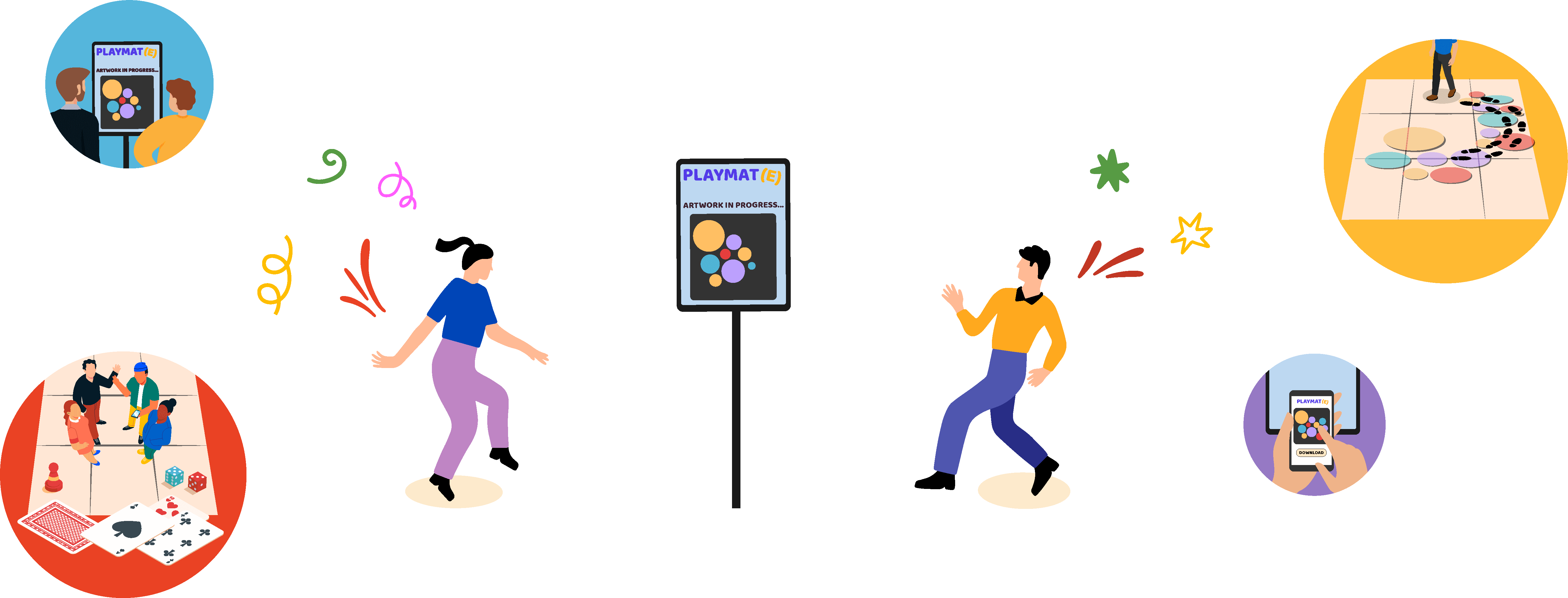
Role
UX/UI Designer, UX Researcher
Tools
Figma, Miro, Premiere Pro, Illustrator
Duration
March - May 2023 (13 Weeks)
OVERVIEW
PLAYMAT(E) is an interactive, responsive mat that prompts its users to play fun board games that act as conversation starters. The mat also tracks and responds to users' movements to create a shared, generative artwork as they play the game. This concept aims to gamify the experience of socializing to make the it less intimidating, and more playful.
THE PROBLEM
Socializing at university can be hard
Despite its cultural and linguistic diversity, Australian university campuses are lacking in fostering a stimulating social atmosphere for university students. An improvement in the campus spaces seems imminent as it would encourage students to form meaningful social connections.
THE SOLUTION
Making friends can be less intimidating, more playful
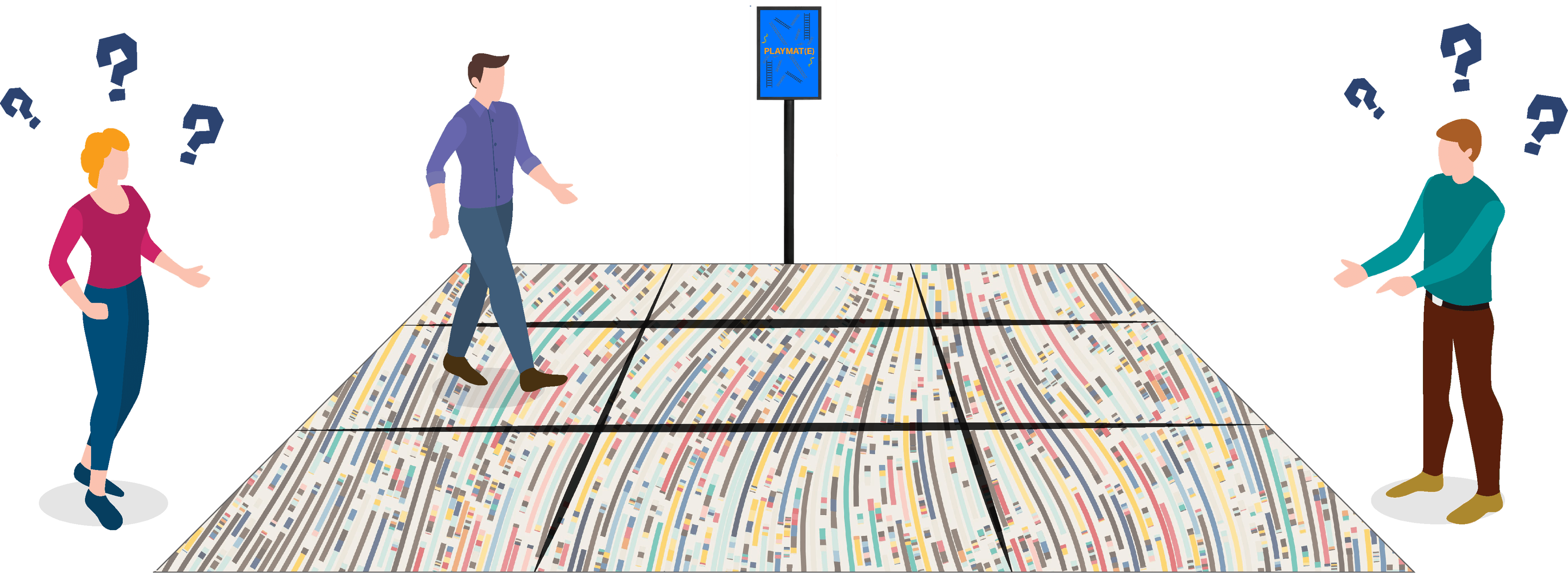
In its idle state, PLAYMAT(E) displays a screensaver animation to attract potential users to step on the mat. When user steps on it, it responds interactively to the users’ movements with an appealing animation. This responsive animation ideally creates a honeypot effect and attracts other users to step on the floor.

Using weight-detecting technology, the mat detects the presence of multiple individuals. Once there's multiple users on the mat, the accompanying navigation screen provides two choices: creating art through movement or by engaging in games.

The games provided in this concept are simple, easy to play, and are meant to act as
conversation starters to break the ice between students.

The navigation screen allows users to track their artwork being generated in real time
as they played games or moved around the mat.

Once users’ finish their selected task, a QR code is displayed on the screen that allows
them to download their collective, generative artwork. At this point, a text prompt is also displayed that nudges the users’ to exchange their social media information and stay in touch with one another.
OUR APPROACH
But how did we get to this solution?
Before we began to conduct user research and identify the pain points faced by university students in socializing, we established a research objective and guiding research questions. This helped us define the scope of our research and ensure it aligned with our end goal of fostering social connections on campus. (figure below would be of research objectives and 3 research questions below that)

RESEARCH

Our research could be divided into primary and secondary research, where secondary research included white paper research exploring the…...
Our primary research triangulation included questionnaires, user interviews, and contextual observations. All of this data was then synthesized by conducting a thematic analysis, which helped in persona development, storyboards, and concept ideation.
BACKGROUND RESEARCH
A way to lead a balanced, stress free lifestyle…
"A balanced lifestyle is crucial for maintaining good mental health and reducing stress (Lobo, 2006)."
Context
People lead an unbalanced lifestyle due to work commitments and no social support.
Another exacerbating factor was the lack of awareness regarding the impact of leading an unbalanced lifestyle (Walsh, 2011).
Demographic
Target demographic : 18 - 25 year olds (University students).
The need to balance academic demands, personal life, and work responsibilities are the main contributors to student burnout (Lawton, 2019).
ONLINE QUESTIONNAIRES
75% of our respondents admitted to not having a good study/life balance.
We started our primary research with online questionnaires to collect quantitative data exploring the study/life balance, and stress levels amongst university students. We received 40 responses.
Link to responses.
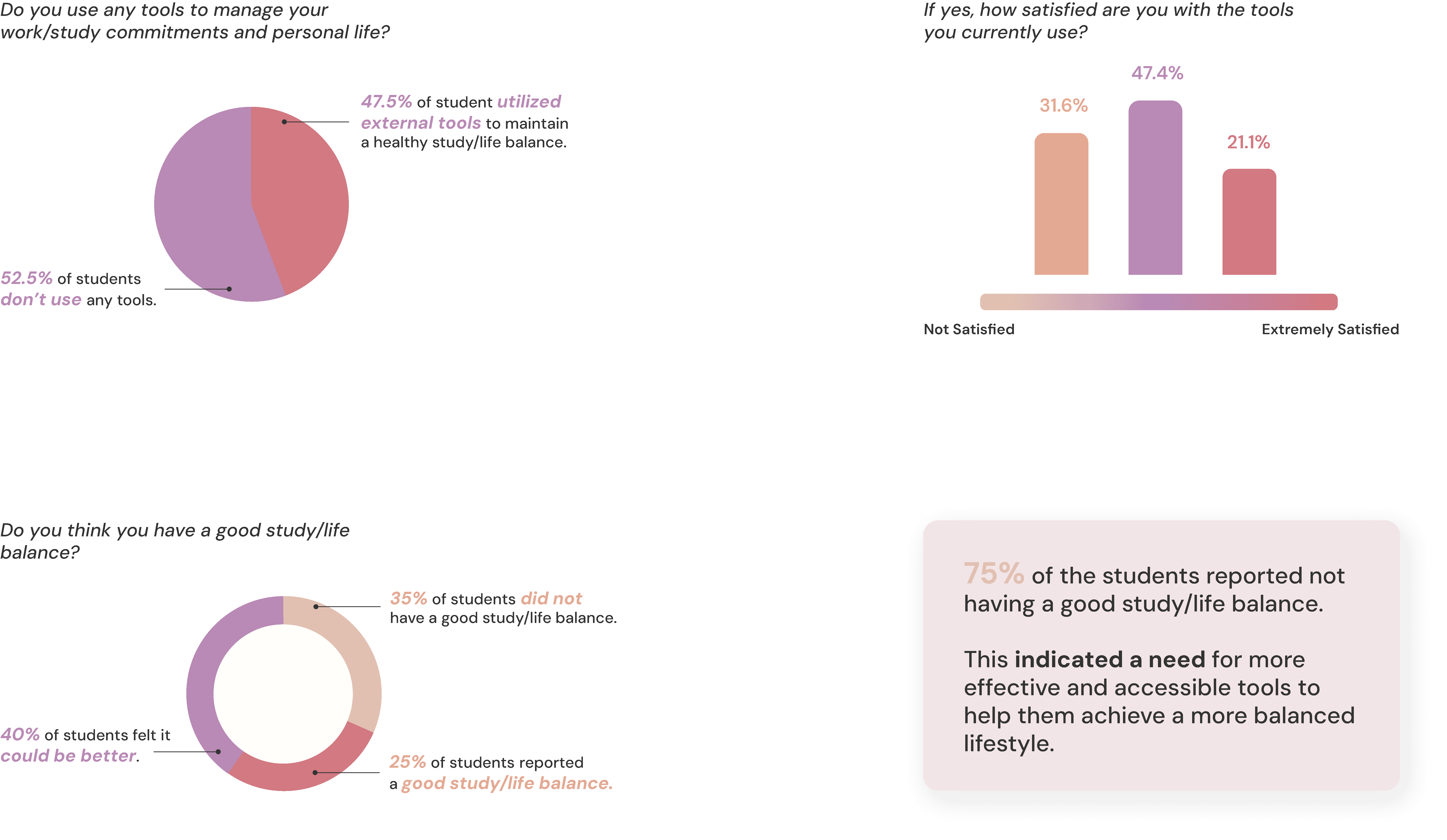
USER INTERVIEWS

A total of 10 semi-structured interviews were conducted, involving Australian university students. This was done to obtain context-specific insights (Flick et al., 2004). The interviews helped us validate our survey findings, explore daily routines of university students, and probe deeper into the effectiveness of current scheduling tools.
CONTEXTUAL OBSERVATIONS
A total of 10 semi-structured interviews were conducted, involving Australian university students. This was done to obtain context-specific insights (Flick et al., 2004). The interviews helped us validate our survey findings, explore daily routines of university students, and probe deeper into the effectiveness of current scheduling tools.

DATA SYNTHESIS
We conducted a thematic analysis to synthesize our findings from the questionnaires, interviews, and diary studies. A bottom up analysis of the data was done to identify trends that appeared from similar clusters of data.
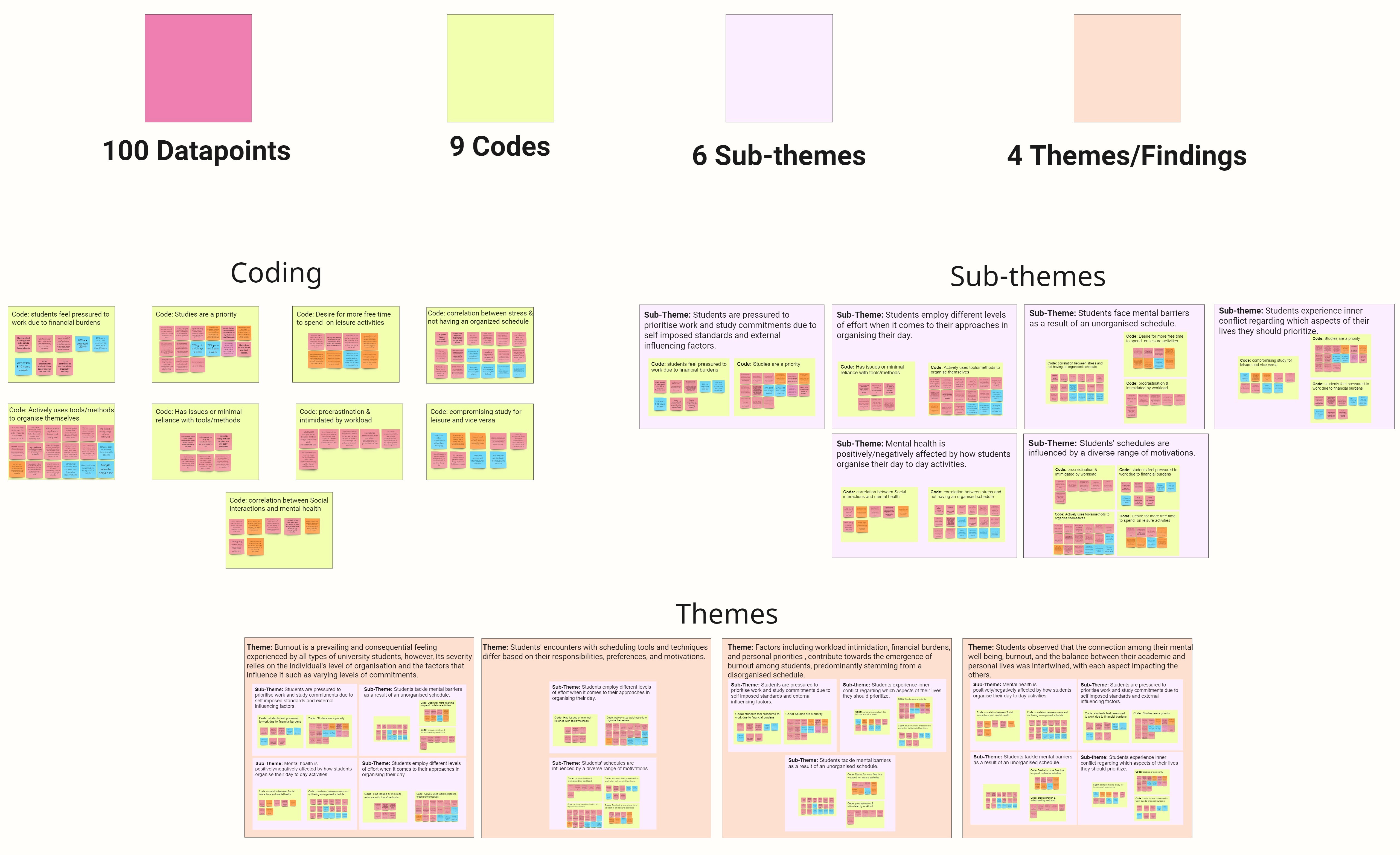
KEY INSIGHTS AND SCOPE REFINEMENT
Make it simple, humanize the interface
The overarching goal of this redesign was to make Jira more intuitive and accessible for new Jira users. And so, before delving into the design phase, I established a set of pivotal conditions to shape an efficient user flow.
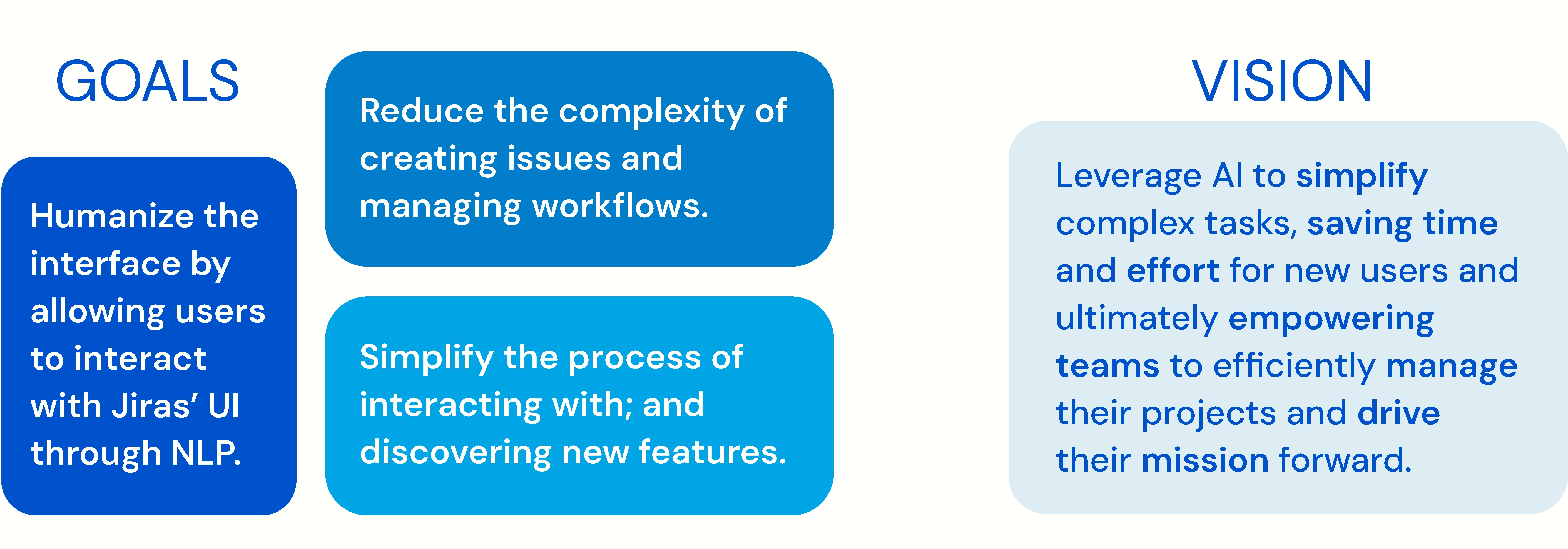
CONCEPT IDEATION
Once we prioritized our insights to refine our scope, our next step was to ideate a design solution that collectively addressed all the problems defined in our prioritized insights.

DECISION MATRIX
Upon tutor feedback and reflection as a group, we realized that each one of us had 1 unique intuitive solution. As a result, we decided to narrow down our ideas in order to avoid duplication of concepts. The 3 resulting design solutions were evaluated using a Harris Profile Decision Matrix in order to justify our decision making process and objectively select our final idea.

FINAL CONCEPT
PLAYMAT(E) was chosen as our final design solution as it responded the most effectively to our design problem according to the criteria we set in our decision matrices.
